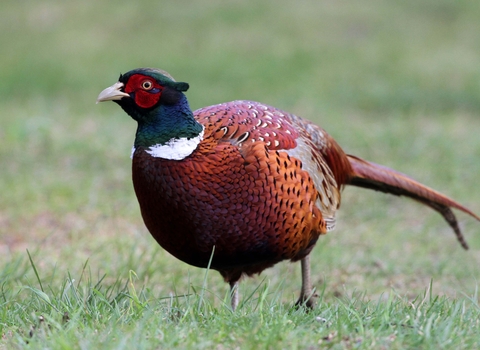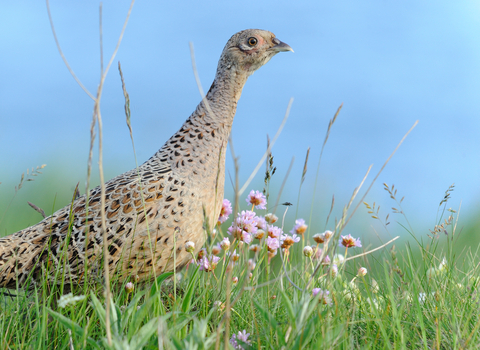
©Margaret Holland

©Amy Lewis

©Terry Whittaker/2020VISION
Pheasant
A handsome gamebird, the pheasant is an introduced species that has settled here with little problem. It can be spotted in its farmland and woodland habitats, although you'll probably hear the loud, croaking call of the male before you see it.
Scientific name
Phasianus colchicusWhen to see
January to DecemberTop facts
Stats
Length: 70-88cmWingspan: 80cm
Weight: 980g-1.4kg
Average lifespan: 1-2 years
Introduced, non-native species.
About
A very familiar gamebird, the pheasant is large and colourful, and has a long tail. Common in farmland and woodland throughout the UK, the males' loud, sharp, croaking call can be heard resonating through the countryside before the bird is actually seen. Pheasants eat seeds, berries, leaves and insects; they roost in trees and can form flocks in winter. During the breeding season, one male may mate with many females, who then raise the chicks alone.What to look for
Male pheasants have striking bronze plumage, a red face and wattle, a green neck with a white ring around it and a long tail. Females are sandy brown, with an intricate pattern of black spots and bars. Pheasants are larger than partridges and have longer tails.Where to find
Widespread and found almost everywhere.Did you know?
Pheasants are native to Asia, but were introduced into much of Europe by the Romans, possibly arriving in the UK with the Normans in the 11th century. Largely forgotten and locally extinct up until the 19th century, they became a popular gamebird once again and are extensively reared by gamekeepers.Watch
Pheasant (https://vimeo.com/447523994)
Pheasant by John Bridges
